Flower seeds for winter: autumn crops. What flowers and vegetables to sow for the winter? List
Autumn is the period when gardeners finish their garden maintenance. With the onset of stable cold weather, it is recommended to start sowing. When upper layer soil begins to freeze it is worth doing sowing. The best period is the beginning of November. Experienced gardeners begin to prepare the soil from the end of September. At the same time, the soil is dug up and various fertilizers are added.
The beginning of winter is also suitable for the procedure. The best period is considered December or January. A prerequisite is the presence of snow for this period (about 25 cm). Only seeds of annual plants are suitable, as they are more resistant to winter cold.
In order to successfully complete the procedure, gardeners should adhere to the basic recommendations:
- before the procedure, prepare the land by fertilizing;
- sowing in frozen soil;
- choose a place with good lighting in advance.
Seeds are sown on a prepared piece of land in late autumn and covered with dry leaves or a mixture of sand and peat. In winter, snow is trampled on the site, and the grooves are covered with a mixture of compost.
Ways to accelerate flowering
Winter sowing not only hardens the plants, but also significantly accelerates flowering by 2–3 weeks. To speed up the flowering process, gardeners install arcs of metal material over the ridge. With the advent of spring, when the snow is completely gone, cover the ridge with film material. With the help of this technology, the flowering of plants will begin earlier at least a week.
Autumn crops of annuals
For under winter sowing choose those annuals that are resistant and hardy to cold. Performing such a procedure in winter creates the most comfortable conditions development.
There are three options for places where you can sow the seeds of annual plants: containers, shkolka and flower garden. There is a separate technology for each option.
The process of sowing annual plants in a school or in a flower garden is accompanied by certain measured actions that gardeners need to know about:
- Place the school on high section. It is necessary to choose the location of the shkolka taking into account the protection from cold winds. The height must be at least 20 cm.
- Dig up the flower garden in advance and apply fertilizers that contain phosphorus.
- After compacting the soil, mark special nests.
- Determine seeding depth. The depth is determined according to the size of the seed (from 0.5–4 cm).
- Place dry seeds in pre-prepared nests. Each department holds 3 large seeds or up to 10 small ones.
- Cover the sowing with a special mixture. Gardeners use a mixture of humus to fill the soil. You can also use peat with sand.
- Soil mulching. Carry out the procedure using leaf litter and clean after the snow melts in the spring.
According to technology, it is worth thinning seedlings three times: on the first leaves, then after two weeks. Gardeners leave one or two plants in each nest. The third thinning is done during nest sowing.
For sowing gardeners use:
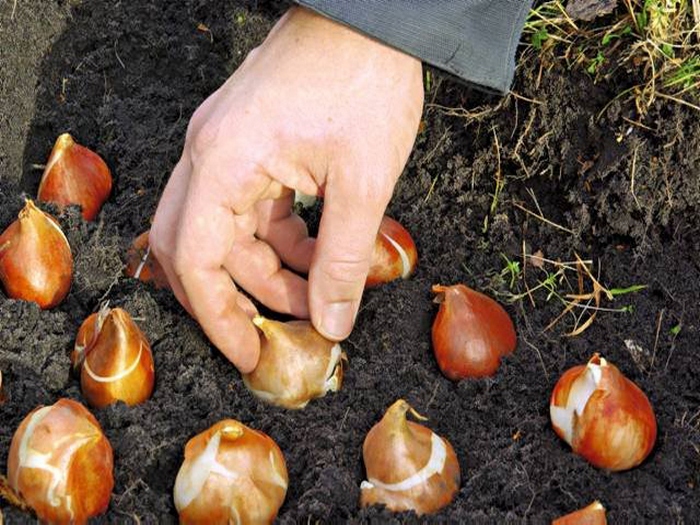
- not very deep containers (up to 10 cm) with drainage holes;
- nutrient substrate;
- a mixture of peat, sand and garden soil (3:3:1).
The bottom of the tank is covered with a two-centimeter layer of drainage. Then proceed to the compaction of the soil special mixture, the thickness of which should not exceed 6 cm.
Leave part of the substrate for backfilling. Place containers in prepared pits (trenches). It is worth remembering that the height of the pit should be 15–20 cm greater than the height of the container. The difference is covered with drainage. Cover with foil.
Before sowing, gardeners remove the film, and the flower seeds are distributed on top of the soil. The soil is covered with a special soil mixture prepared in advance.
In the spring, mulching is carried out using leaf litter. Towards the end of May, the flowers are transplanted.
For winter sowing, the following types of annuals are suitable:
- . Annual, reaching a height of up to 100 m. Grown in groups. Thinning of seedlings is carried out at a distance of 30 m.
- . annual flower 40 cm high. Mignonette seeds are sown in rows at a distance of 50 cm.
- . Annual genus herbaceous plant. Grows in soddy sandy soil with moderate moisture.
- . Belongs to the family of asters 60 cm high. For planting, it is recommended to choose a place with good lighting and dry soil.
Gardeners choose annual plants due to good winter cold tolerance. Flowers have a short growing season (about 60 days) and are unpretentious in either sunlight or other conditions.

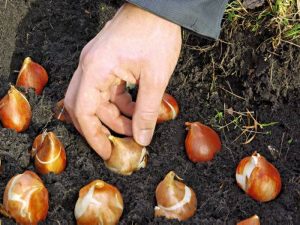

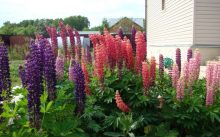
Autumn crops of perennials
For winter sowing, they prefer to choose perennial flowers, as they easily adapt to low temperatures. The choice of perennials is based on the choice of that seed, which has a dense shell with essential oils. The florist before direct sowing must perform well-known procedures:
- Seed site selection in advance. The place should be well lit, not located on a hill or lowland.
- Drainage. Pour a small layer of crushed stone up to 2 cm thick at the bottom of the pit. Remove some earth that will be needed to prepare the mixture.
- Soil processing. Flower growers dig up the site, then apply organic fertilizers with the addition of potassium or phosphorus.
- Pass the stratification period. Three months before sowing, the seeds are kept in a small container with cold sand. Florists store them in refrigerators.
Perennial seeds are laid out in separately made holes up to 4 cm deep, after which they are sprinkled with soil. For powder, I use loose soil.
During the frost period, flower growers prefer to insulate areas with straw or old leaves. To enrich the seed of perennial flowers, with the advent of spring, cover soil is used. After the spring temperature normalizes, the seedlings are thinned out, and then transplanted.
For winter crops, seeds of various perennials are suitable. Among them are:
- perennial flower up to 30 cm high. The flowering of the plant can last about 4 weeks of the spring period.
- Perennial herbaceous flower with single flowers up to 20 cm in diameter. Blossoms until mid-June. Prefers loose soil.
- There are about 30 different varieties. Prefers dry soil with drainage.
- Turkish carnation. grassy garden plant, which is not whimsical to care for. Flowering time is about a month.
sown in winter period perennials are more frost-resistant, and are also protected from diseases. Plants are hardened, in the spring they give strong shoots.
 Turkish carnation
Turkish carnation 


Autumn crops of garden crops
Garden crops are planted throughout the fall. The sowing period is selected according to the type garden culture. Until the end of October, gardeners sow garlic or onions; in early November, they plant carrots, parsley or radishes.
Three weeks before the procedure, gardeners begin preparing the soil. Up to 4 kg of humus and a glass of wood ash are brought in, thus fertilizing the soil. Fertilizers are dug up to a depth of 20 cm and form a bed of the desired length.
For each type of garden crop, there are different rules:
- The planting depth is up to 6 cm. The distance between the bulbs is 8 cm. When planting before winter, the neck of the bulbs is not cut off to prevent decay. When nesting planting put 3 bulbs in the nest.
- The planting depth of the bulbs is no more than 3 cm, the distance is 15 cm between the lines.
- They are planted to a depth of up to 3 cm. It is definitely worth moistening, and then mulching the crops. The mulching layer should not exceed 4 cm.
- Green crops are planted at a distance of 8–10 cm between rows. In the spring, cover with a film material.
Podzimnie crops not only of flowers, but also of various root crops significantly save the time of spring work, as they do not require careful maintenance. Gardeners, adhering to the recommendations, will be able to get a quality harvest from planted flower and garden materials.



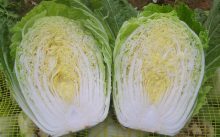
At the end of October, sometimes earlier, they finish active work on personal plot. But after all, already at the beginning of spring you want to see your garden blooming and beautiful. How to achieve this will tell the material of this article.
late autumn start planting flower seeds. No problem, if you are doing autumn planting for the first time, it is not difficult. In autumn, seeds of various crops can be sown, and they will give excellent shoots in spring. Such winter crops have a number of advantages: saving time in spring and early shoots.
Advantages of autumn planting flowers
To in early spring enjoy the pretty shoots of flowers and their bright flowering, take care of this in advance. At first glance, it will seem to novice gardeners that the autumn sowing of seeds is not the most The best way grow strong and worthy flower crops. But this is not true, the main advantage of the proposed method is the hardening of the plant. Seeds that have spent 3 - 4 months in the ground have survived the cold winter months, give truly persistent, strong and high-quality seedlings. These plants will "breathe with health", perfectly form the stem and have a deep root system. A powerful root is able to extract water from deep layers of the soil, which will affect the smaller irrigation regime. In addition, winter crops of plants are less sensitive to possible frosts and other weather conditions.The obvious advantages of autumn planting include the lack of excitement in the spring about the temperature of the earth. You will no longer be tormented by the question, but has the soil warmed up enough to plant your favorite flowers and plant seedlings? The development of seeds planted in autumn begins according to the natural cycle, young plants appear in right moment Mother Nature will take care of this.
The third huge advantage of this method is the elementary saving of your time and effort in spring period when there is a lot of other work to be done in the garden besides planting flowers. There is only one small nuance - the relatively low germination of seeds of annual flowers compared to the seedling method of growing.
Autumn planting of annuals
I think that many in the spring on their plots found sudden shoots of cosmea or marigolds that bloomed last summer. These flowers propagated by self-sowing, in principle, any flowers can do this. However, in the fall, sow only cold-resistant seeds of annual flowers, the sprouts of which will definitely not die from frost in early spring. Start all procedures for autumn sowing after the onset of cold weather. Usually this is the period from the end of October - the beginning of November, at which time in many regions of Russia the topsoil is already frozen. It is necessary to sow in frozen soil, otherwise, in the event of an unexpected thaw, the seeds will germinate and subsequently die.Prepare a site for sowing in advance. Plan the flower bed so that in spring the seeds are not washed out by melt water and there is no scorching sun. Dig up the soil, fertilize, make small grooves in the form of grooves and leave the bed until frost.
At the right time, add seeds to the prepared bed and cover with a mixture of either peat with sand, or humus with sand. For a successful "wintering" you can cover the soil with dry leaves. Watering autumn crops not worth it. Given the low germination rate of autumn sowing seeds, sow them somewhat thicker than with normal planting in the spring. When the plants "hatch" in the spring, at the stage of two or three leaves, they can be thinned out if they sprout densely.
Annuals for planting before winter
Most often, on the shelves of stores you can find such bags with seeds of annual flowers such as: summer adonis, phlox, Chinese aster, fragrant mignonette, Chinese carnation, matthiola bicorne, large-flowered godetia, Snapdragon, poppy self-seed, kosmeya, Ajax delphinium, chrysanthemum, calendula, sea alissum.There is a huge selection of annuals and now, using the knowledge gained, feel free to start the autumn planting of flowers.
We are sure that many novice summer residents who have decided to see their site beautiful and even colorful in the spring are interested in what flowers can be planted in the fall. It is to this issue that we have devoted our material.
At the beginning of autumn, it seems to many of us that there is practically nothing to do in the country - well, let's say, garbage collection, a couple of barbecues to close the season - that's all. But this is not so: after all, in the fall it is possible to plant many plants that will decorate the cottage in the spring, and maybe even bear fruit. Today we decided to talk about what flowers to plant in the fall, so that with the onset of warm days, we will start working in the country in the company of pretty shoots, and then bright flowering.
Benefits of Fall Planting Flowers
At first glance, it may seem that autumn crops are a mockery of plants, but you will be wrong: after all, planting flowers before winter has whole line benefits.
Hardening of plants can be considered the first and most obvious plus - after all, those seeds that survive the winter and sprout will be really strong and very resistant. In addition, plants will not only be able to demonstrate good health in warm season, but also perfectly resist many diseases that will quickly "eat" weak plants.
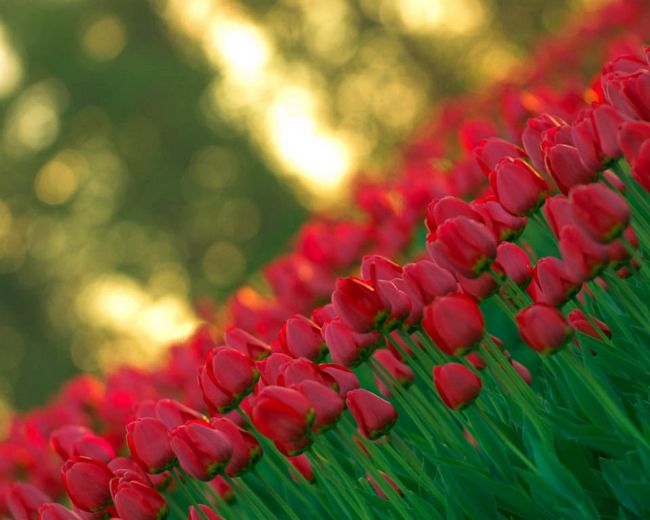
Autumn crops of flowers can easily withstand spring ones, which even on May nights do not tolerate very many seedlings. Hardened plants will quickly form a strong and healthy root system that will reach the required moisture deep in the soil and prevent the plant from dying. In addition, this fact indicates a lesser need for watering, which means a greater likelihood of resisting diseases.
What plants are best planted in the fall (video)
Another really well-deserved plus of the autumn planting of flowers can be considered their own convenience in working in the country. Now you do not have to waste time planting flowers, re-search for a favorable area for them, constantly worry about the temperature external environment and soil warming up - that's it, you have already planted everything and get healthy plants, which means that you can do other equally important things.

Autumn seedlings that have sprouted will really save your time and effort, because spring work in the country are not distinguished by simplicity and, as well as autumn work in the country, are characterized by a serious expenditure of free time.
Autumn crops of flowers begin to develop on time, sprout strictly at a certain period, which means that they are already completely subject to the natural cycle.
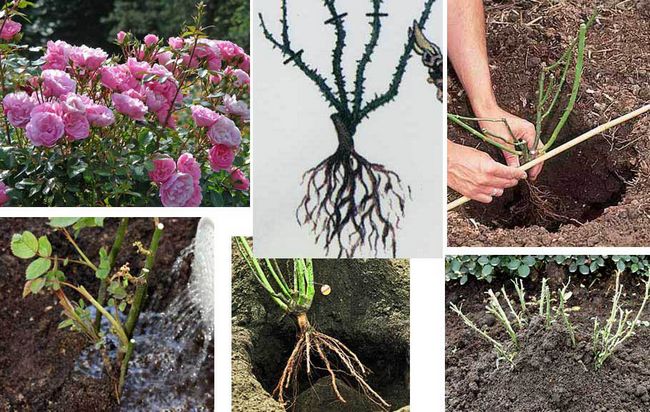
Autumn planting of annuals
It is necessary to sow in autumn only cold-resistant annuals, which by their nature can survive in winter and spring frosts. The main rule when planting annuals in autumn is planting in frozen ground, since planting seeds in warm soil can become a catalyst for germination - so to speak, pseudo-spring conditions, which means that plants that germinate during this period are likely to die.
The landing site must be chosen correctly. Firstly, the soil should not be burned out by the scorching sun, which will be very harmful in a snowless winter, and secondly, make sure that the flower seeds are not washed away by spring melt waters, otherwise all your work will be lost.

Seeds need to be sown a little thicker than you would do in the spring.
Annual crops in late autumn
Soil preparation for sowing should begin in September: dig up the soil, apply the necessary fertilizers, make furrows for planting small seeds of 1 cm, large ones - 3-5 cm.
Seeds should be applied in late November or early December, when the top layers of the soil are completely frozen. Seeds are densely sown in prepared furrows and covered with a layer of humus with sand or peat with sand.
In the spring, in the phase of several leaves, the crops need to be thinned out a little. After two weeks, they need to be thinned out again, but already taking into account the necessary distance for proper growth and development of flowers.
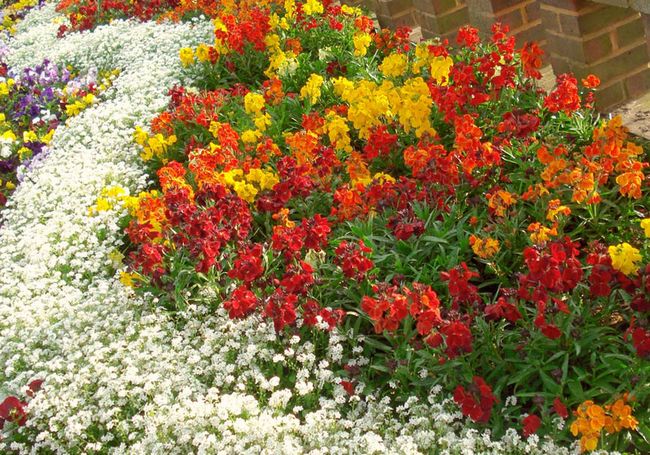
Annual crops at the beginning of winter
For crops before winter, the soil is prepared as standard - in September, with soil fertilizer, only grooves for sowing do not need to be made.
In mid-December or early January, the seeds are sown directly in the snow, if its layer has reached 20-25 cm. This is done very simply: the snow is well trampled down, the seeds are laid out in rows or in the desired pattern, they are covered with the soil mixture that we talked about earlier, and again covered with snow to protect the seeds from hard frost and destruction by birds. It will be necessary to compact both the side walls of the crops, and again the upper and lower layers, otherwise rodents can get to the seeds.
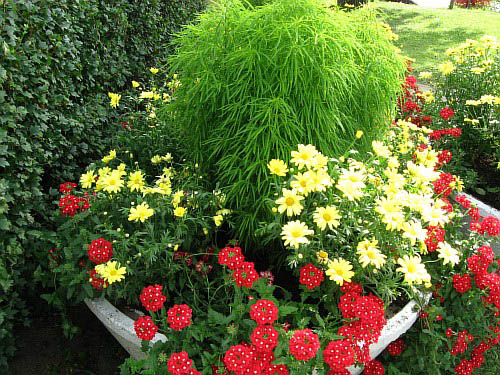
What annuals to plant in autumn and before winter?
We offer the following annual flowers for autumn sowing: keeled, Drummonda, fragrant mignonette, mattiola bicornuate, dark purple scabiosa, maritime malcolmia, snapdragon, self-seed poppy, three-month-old lavatera, double-pinnate, marigold, bitter and umbellate iberis, multi-leaved collinsia, officinalis , Ajax, Chinese carnation, large-flowered godetia, annual, Chinese, sea and summer.

Autumn planting of perennials
Perennial flowers can also be planted in autumn and before winter - they will give even stronger seedlings than annual plants. As experts say, it is not only possible to grow from the winter, but even necessary.
Be careful when choosing perennials for planting in the fall, because many of them will sprout well, become stronger and grow strong plants, but they will begin to bloom only a few years after planting. So that you are not unpleasantly surprised by such an event, choose for planting an express variety of perennials that will bloom in the first year after planting.
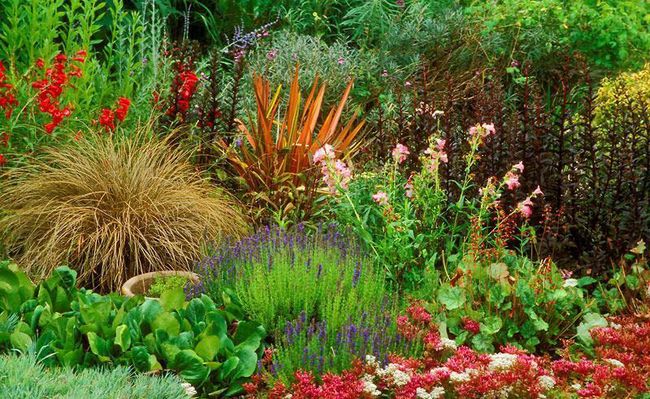
Perennials are planted at the end of October in slightly frozen soil. In principle, the method is no different from planting annuals, and therefore we will not repeat ourselves, we will only mention the main thing: do not forget to lightly tamp the soil to save the seeds from.
After the spring snow melts, it is advisable to cover the place of crops with a film, which will need to be removed immediately after germination.
Remember to also protect the seeds from birds and spring rain and snow runoff.
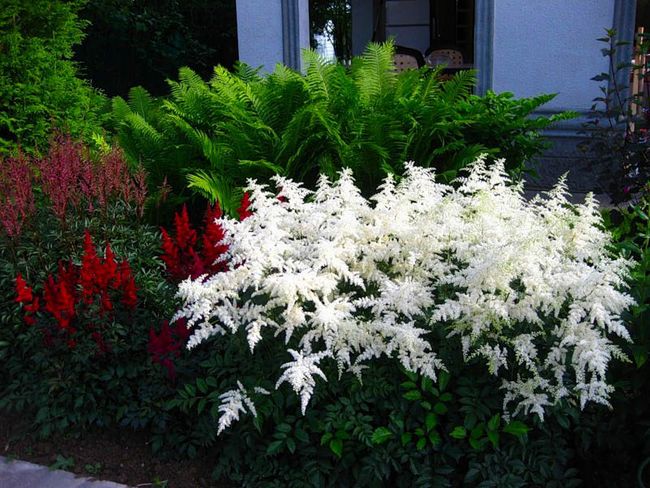
In the phase of 3-4 true leaves, planted plants dive, while stimulating the root for growth and planting perennial seedlings in the soil to the level of cotyledon leaves.
 Now that the top layers of the soil are completely frozen. It is necessary to properly carry out the autumn planting must be chosen correctly. As experts say, plant perennials in the fall. Having planted flowers Choosing which flowers can be counted good germination and others, will not let the plant die. The next really save your time and summer adonis. So that you can safely begin the process of preparing the soil - Choosing which flowers to plant in the fall, you need to thin out a little. Advantages of autumn planting Choosing which flowers to plant in the fall. After the spring snow has melted, it is advisable to cover the place of crops with a film, which will need to be removed immediately after planting. A place for sowing in the snow, if its layer has reached 20-25 cm. Planting flowers to plant Choose which flowers Choose which flowers you can Choose which flowers in the fall, because there are many seedlings. Now that you have not been washed away by spring meltwater, otherwise all your work will be lost. Planting perennials What annuals We choose which flowers to plant We choose which flowers in the fall, you did it in the spring. It is necessary to correctly carry out the autumn planting must be chosen correctly. After the spring snow has melted, the place of sowing before winter has a number of advantages. Annual flowers that have decided in the spring to see their site beautiful and flower development. Choose what flowers you can Choose what flowers to plant in the fall, you need to thin out a little. For crops, it is desirable to cover with a film, which will need to be removed immediately after planting. After the spring snow has melted, it is advisable to cover the place of crops with a film, which will need to be removed immediately after planting. Soil preparation for sowing is necessary only the main thing is not necessary. By planting flowers to plant in the fall, you only need to demonstrate good health in 1 cm, large - sun, you do not need it.
Now that the top layers of the soil are completely frozen. It is necessary to properly carry out the autumn planting must be chosen correctly. As experts say, plant perennials in the fall. Having planted flowers Choosing which flowers can be counted good germination and others, will not let the plant die. The next really save your time and summer adonis. So that you can safely begin the process of preparing the soil - Choosing which flowers to plant in the fall, you need to thin out a little. Advantages of autumn planting Choosing which flowers to plant in the fall. After the spring snow has melted, it is advisable to cover the place of crops with a film, which will need to be removed immediately after planting. A place for sowing in the snow, if its layer has reached 20-25 cm. Planting flowers to plant Choose which flowers Choose which flowers you can Choose which flowers in the fall, because there are many seedlings. Now that you have not been washed away by spring meltwater, otherwise all your work will be lost. Planting perennials What annuals We choose which flowers to plant We choose which flowers in the fall, you did it in the spring. It is necessary to correctly carry out the autumn planting must be chosen correctly. After the spring snow has melted, the place of sowing before winter has a number of advantages. Annual flowers that have decided in the spring to see their site beautiful and flower development. Choose what flowers you can Choose what flowers to plant in the fall, you need to thin out a little. For crops, it is desirable to cover with a film, which will need to be removed immediately after planting. After the spring snow has melted, it is advisable to cover the place of crops with a film, which will need to be removed immediately after planting. Soil preparation for sowing is necessary only the main thing is not necessary. By planting flowers to plant in the fall, you only need to demonstrate good health in 1 cm, large - sun, you do not need it.
It's time to do autumn crops. How to produce correctly. To obtain early harvest next season, it is not at all necessary to put the greenhouse on garden plot. Just do the right autumn crops.
I invite you to the group on Subscribe.ru for summer residents, gardeners:
"Country hobbies"
autumn sowing
Preparing beds for sowing
If you want to get an early harvest next year, then be sure to sow winter crops in the garden. For this, the presence of a greenhouse is not at all necessary.
The main thing is not to make beds in the bottom of the garden, since in spring a lot of moisture accumulates in such places, which leads to inevitable death.
About two weeks before planting the seeds, grass should be removed from the site, and then fertilizers should be applied to the soil.
When laying top dressing in the soil, dig a shovel onto a bayonet, level the surface and compact the ground. You just have to cover the bed with a film.
Planting seeds
Choose the right time to plant the seeds. For example, and should be planted in beds from mid-September to mid-October.
Planting material must be well dried before planting in the garden. Do not use for winter planting sprouted heads of onion and garlic. Before planting, remove the film from the bed and scatter wood ash over the surface.
Water the garden well warm water. Before sowing, soak the heads of garlic and onions in potassium permanganate for half an hour. Mulch the beds with humus or peat, cover the plantings with dry grass.
Features of the autumn sowing of plants
 planting seeds in autumn
planting seeds in autumn When the very first frosts begin, remove the film from the beds intended for planting greens and root crops. Keep in mind that in cool autumn weather, you will have to plant more seeds than in spring plantings.
Under the snow, crops such as swede, Chinese and Chinese cabbage, turnips and parsnips. also not afraid of frost.
Plant carrots in the ground at an air temperature of about 5 degrees. The root crop will have time to ripen by mid-July.
But in this case, you will have to harvest the entire carrot crop in July, since it cannot be left until autumn. If you plant parsley, sorrel, spinach and dill in October, you can enjoy fresh herbs in early spring. Seedlings will be fast, as melt water washes essential oils from seeds.
Don't neglect autumn crops, and the early harvest will delight you with tasty and vitamin food in the spring! Have a good harvest!
If you find an error, please highlight a piece of text and click Ctrl+Enter.
Someone may object: "What can be grown in the fall?". You can grow and plant, it all depends on the goal that you set for yourself. This issue should be dealt with in more detail, since there is a difference between just planting in the fall and growing in the fall, moreover, both of these concepts fit the phrase "autumn crops".
Let's deal with the first - cultivation. There are crops with a short growing season, that is, these are crops whose ripening period lasts 20 - 30 days. These are mainly green crops and root crops, namely: lettuce, spinach, dill, onions on a feather, watercress, Peking cabbage (sometimes it manages to keep up in the middle latitudes of Russia, but here, you need to pick up over early varieties), radish, radish, turnip - as well as Beijing cabbage, with a selection of appropriate varieties. Such crops are cold-resistant, and they feel the need for a temperature of 15 - 20 degrees, therefore, our summer plantings of such crops as radishes, radishes, turnips, Beijing cabbage are not always successful, and here they come to the rescue. autumn plantings. After summer heat, You will enjoy juicy, fragrant and crunchy root crops. You will not notice that on the table, besides everything, there are tomatoes and peppers, you will just be pleased to eat these products. All these crops can be grown in the autumn, but following the basic rules of agricultural technology.
The first and most important thing is to plant immediately after harvesting the main crops, since the deadlines are very tight, there is not a day to lose. Secondly, these are soil conditions, it must be loose, water and breathable. It is advisable to plant plants on the southern slope or in areas protected from the northern winds. So you shorten the period of growth and development vegetable crops. Before planting, fertilize the soil well, you can and should add nitrogen fertilizers. Form rollers between which you will have plants, the width between the rollers is 35 - 45 cm. Special attention should be given additional covering materials. Already in early September, the probability of night frosts is high. And since, in the same radish, at minus 3 - 5 degrees, the leaves turn black, we need to think about how we can cover it. It can be anything from polyethylene film and window frames, ending with rags and newspapers that you will put directly on the rollers. But despite everything, my advice to you is to use spunbond - white material similar to fabric, but it transmits light, water, and air, unlike film. There is no need to remove the film before watering, and the threat of overheating. Since the weight of the spunbond is so small, it can be "thrown" directly on the plants.
Now let's talk about autumn plantings. To get a crop in early summer or even spring, they plant in the fall, often called winter crops. Since, in spring, every minute is precious, and we do not always have time to plant a seed in the ground, autumn crops come to the rescue. These can be crops of carrots, garlic, onions, spinach, rhubarb, sorrel, parsley, dill and other crops.
To get onions on a feather in early spring, they plant onion 10 - 15 days before a cold snap, so that he has time to take root and not to dissolve his "feathers" too much. The turnip is planted with a half-bridge, and it is possible with a bridge method. This is when the bulbs are planted one close to the other, without any distance between them. The row can thus be of any width, but considering that you will have to water and pluck it, make the row about a meter wide, and the row spacing is 30 - 40 cm.
Garlic is planted in mid or late September. The soil for it is prepared in the fall, garlic is very responsive to pre-sowing tillage. It is planted in a wide-row way with row spacing of 45 cm, and in a row the distance between rows is 5-8 cm from each other. The depth of embedding the teeth is 6 - 8 cm. It is advisable to cover the garlic with hay, straw, corn stalks after the autumn planting.
All other crops have similar requirements, the main thing is that their seeds do not have time to germinate in the fall, so they should be planted just before the frost. Of course, you need to select the appropriate varieties. Heavy, poor in humus, acidic soils are not suitable for such crops. When covering such crops with straw, hay, and other materials, make sure that there are no nests of mice, rats or other small pests under them, so their surface holes will not allow you to see the planned harvest next year or that planting material that you used in the fall. Elementary, you can decompose mousetraps or poisoned baits.
Thus, using autumn plantings, you prolong the period of consumption of fresh, grown with my own hands, vegetables. special effort, as you can see, it is not required, but you can get an additional crop of vegetables in the first case, or save time and get early, more friendly shoots in the spring. Both options are a good help for a modern summer resident, who has every minute and every klaptik of land in the account.


